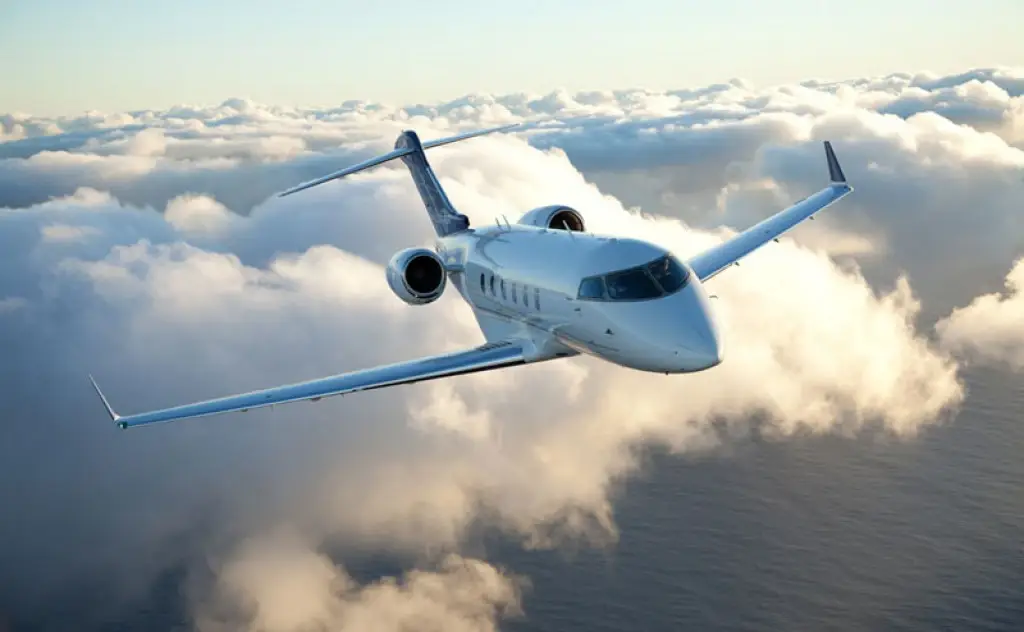Have you ever wondered what are the best flight trackers and why do people use them? If yes, then we've got something for you!
People track flights for many reasons. Aviation enthusiasts depend on flight trackers to tell them about the locations and finer details of planes, but flight trackers have plenty of practical purposes too.
Accurate flight arrival and departure times are important for companies providing transport connections, such as car park shuttles and taxis. Researchers and journalists may track flights to trace the movements of significant people, relief missions, or troop deployments. Flight tracking is also a great way to check whether the flights of friends or family members are on schedule. What's more, trackers even show planes from private jet charter services as well as helicopters!
Are you wondering how to track a private jet yourself? Read on as we review the top five flight trackers and attempt to answer the ultimate question: what is the best flight tracker?
What is a flight tracker?
Flight trackers feed information from multiple data streams into high-tech software to provide real-time tracking and a comprehensive database of information about planes, flights, and airports. The information they can provide includes:
- the time an aircraft arrived or departed
- the speed, altitude, route, and location of a flight currently in the air
- the waiting times, weather, transport options, gate assignments, and amenities at an airport
- delay statistics
You may even be able to see a 3D rendering of the pilot’s view from the cockpit!
Data Sources for Flight Tracking
Flight trackers use multiple data sources — some, over 80 — to gather information. They may include air traffic control systems, airline operations, airplane cockpits, and positional details from sources such as:
ADS-B (automatic dependent surveillance-broadcast)
ADS-B provides the most useful data for flight tracking. This relatively new technology is environmentally-friendly and will eventually replace radar in Air Traffic Control operations. Planes equipped with an ADS-B transponder can:
- orient themselves more accurately, via satellite navigation rather than ground radar
- transmit information including their identity and position to other aircraft and ground receivers
- receive information about other aircraft
While most commercial aircraft are now equipped with ADS-B, those that aren’t must be tracked by other methods.
MLAT (Multilateration)
MLAT is a surveillance application that accurately establishes transmission positions. It matches identity data in the transmission and then sends it to the ATM (Air Traffic Management) system.
OGN (Open Glider Network)
The Open Glider Network provides tracking information for gliders and other light aircraft, using data principally from FLARM (Flight Alarm) devices and OGN trackers, but also from sources such as FANET (Flying Ad-hoc Network) and PilotAware.
Top Five Flight Trackers
Flight trackers are available as apps, websites, or both, with some offering historical and real-time data. So, what is the best flight tracker app to install on your phone? And what is the best flight tracker website to use on your PC or laptop?
Let’s see what the top five flight trackers offer.
FlightRadar24
Data Sources
FlightRadar24 combines data from sources including ADS-B, MLAT, OGN, and radar with status and scheduling information from airlines and airports.
Availability
It’s available online and as iOS and Android apps. It’s free, but Silver or Gold subscriptions provide additional features.
Features and Use
A search bar allows you to search by flight number, airport, or airline, and you can filter flights by airline, aircraft, altitude, speed, etc. If you have the app, just point your device at a plane to find out where it’s going and what kind of aircraft it is, and see a photo of the plane and what the pilot can see!
A Silver subscription offers 90 days of flight history, further aircraft and flight details such as serial number, age and vertical speed, and current weather conditions at 3,000+ airports. You can also set up tracking alerts. Gold subscriptions extend flight history to 365 days and provide detailed live weather maps, aeronautical charts, and ATC boundaries.
Stand out features: FlightRadar24 offers a live flight tracker map and is highly customizable. It offers the chance to see, in 3D, what the pilot is seeing.
FlightAware
Data Sources
FlightAware gets its data from Air Navigation Service Providers (ANSPs), ACARS Datalink (VHF or SATCOM), its own Terrestrial ADS-B Network, Aireon℠ Space-Based ADS-B, and Airline FLIFO (flight information), providing position updates at least once every minute.
Availability
FlightAware is available online and as iOS and Android apps. It’s free, but offers paid packages with more features or unlimited alerts.
Features and Use
You can search by airline, flight number, departure airport/city, and arrival airport/city. FlightAware offers comprehensive tracking of an airline, charter, private, and general aviation aircraft. Features include full-screen maps with NEXRAD weather information, push notifications, and flight alerts. You can also find information on aircraft flying overhead and see worldwide airport activity.
Premium +, Enterprise, Enterprise WX packages lift or increase the limits on alerts and saved airports, etc. The Enterprise package includes features such as tail numbers and ATC call signs. Aviator and Aviator+ are comprehensive packages aimed at aircraft owners, offering enhanced flight-tracking data and flight history logs.
Stand out features: A live flight tracker map, and a good range of paid packages and complementary products.
FlightStats
Data Sources
FlightStats is a little vague about its data sources, even though they claim to receive and process more data than any of its rivals. Their sources are simply listed as published schedule data, airline, and airport data, positional data (from ‘data partnerships’), and reference data.
Availability
FlightStats offers a free service via its website or via apps for iOS and Android. However, some services offered for free by other flight trackers are limited to subscription packages.
Features and Use
A simple search box allows you to input flight information, while the Advanced Search has options for searching by the airline, flight number, and date or by arrival airport, departure airport, airline, time, and date.
Free features include flight tracking, current conditions, airport delays, and on-time performance reports. To get alerts (25 a month) or view arrivals and departures, you’ll need a Standard subscription. To see historical flight, route, or airport data, or get over 25 alerts a month, you’ll need a Professional subscription.
Stand out features: The iOS app can be launched via 3D Touch, and you can enable Siri Shortcuts to departures, arrivals, route searches, or daily flights.
FlightView
Data Sources
FlightView, now owned by OAG, is also vague about its data sources, but its “hundreds of sources, globally” include schedule data, airline direct feeds, in-air position feeds or radar data, and airport feeds.”
Availability
FlightView offers an online service, and iOS and Android apps for free. There are also paid Elite and Plus iOS apps offering additional features.
Features and Use
You can use the simple two-tab search form to search by flight or route. Flight alerts, itinerary tracking, current weather, delays, airport directions and maps, and 2 days of historical flight data are all included for free. Upgrade to Plus and the app integrates with your iPhone calendar, sharing saved flight details in a new calendar entry.
Upgrade further, to Elite, and you also get 7-day weather forecasts for all top airports plus the Flight Boards feature, allowing you to view and sort all arrivals and departures at top airports.
Stand out features: You can keep track of what’s happening at your home airport by setting up an account. You can also forward your itinerary by email to trips@flightview.com to have your flights preloaded into the tracker.
Google Flight Tracker
It isn’t an app or a website, so how does the Google flight tracker work? Put simply, it draws information from flight-tracking sites. Just enter the flight number into Google’s search bar, and you’ll see the latest flight status, arrival time, where it came from, where it's going, and terminal and gate details. If this is all you require, it’s a quick, free option!
What is the best flight tracker?
So: what is the best flight tracker? As with many things, it will always come down to the specific features you want—and are prepared to pay for. But here’s what we think!
What is the best flight tracker website?
The full-screen live tracking maps on both FlightAware and FlightRadar24 will appeal to aviation enthusiasts. However, frequent travelers may like FlightView’s updates on their home airport.
What is the best flight tracker app?
FlightRadar24 gets excellent reviews for accuracy, and the ability to see a 3D view from an aircraft passing overhead is a hard-to-beat feature for plane enthusiasts. However, for travelers, having their itinerary preloaded into FlightView’s app might win them over.
Whatever your reason for tracking flights, we hope you’ve found the best flight tracking app or website for you in our suggestions above. They all offer a fascinating wealth of detail and useful information for your travels. Happy flight tracking!
To ensure you and your pet can have the flight and amenities you want, contact the Paramount Business Jets team to discuss your requirements. Just call +1-877-727-2538 ext. 1 or email them at charter@paramountbusinessjets.com, and they will arrange a trip that’s perfectly tailored to suit all your needs—and your pet’s needs too!
Sources:
- airhelp.com
- txtav.com
- icao.int
- flightradar24.com
- uk.flightaware.com
- cirium.com
- oag.com
- lifewire.co








